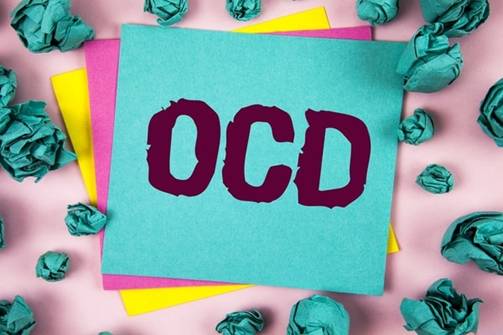Published In
OCD

What is Sensorimotor OCD? The Symptoms and How to Manage It
We’ve heard how obsessive-compulsive behaviors can create feelings of fear of hurting others or oneself in the throes of one’s compulsions and obsessions, however, there’s a different (more subtle) type of OCD that can create a different kind (not less intense) type of fear. What I’m talking about is called sensorimotor OCD or hyperawareness OCD.
OCD is a mental health disorder that includes performing repetitive behaviors and thinking repetitive intrusive thoughts that can cause severe distress. Of course, how the symptoms of OCD manifest in people can vary, depending on the severity and type of OCD.
In any case, the first thing that pops into our minds when we hear someone has OCD is a person repetitively washing their hands or checking locks, or organizing their living space again and again. Unlike this type of OCD, sensorimotor OCD focuses on your body sensations, instead. This OCD can create a fear of being aware of a sensation or obsession in our case and then not being able to un–feel the sensation or be able to return to the state of blessed unawareness.
In this blog, we’re exploring what sensorimotor OCD symptoms are, how it can be treated, and how you can manage it on your own.
Sensorimotor OCD Symptoms to Watch Out


Sensorimotor symptoms of OCD can be somatic and focused on bodily sensations. Hyperawareness OCD can cause a fixation on the body’s sensations, which can later cause feelings of anxiety. Over time, in this OCD, these bodily sensations can become too distressing and may make you feel like you won’t be able to return to the state of unawareness you were in before these obsessions started.
Sensorimotor OCD symptoms can focus on bodily sensations such as;
- Breathing (can include your breathing or others’)
- Swallowing (how many times you swallow, how much saliva is there, or just focusing on the process of swallowing)
- Blinking (how often you blink or others blink, the compulsion to blink, etc.)
- Heart rate
- Eye contact (how much eye contact you make with others)
- Tongue movement
- Visual movements or distractions
- Focus on a specific body part (such as arms, legs, etc.)
If you’re diagnosed with sensorimotor OCD, then there’s a chance you might also be diagnosed with an illness anxiety or health anxiety disorder because more often than not, many people fear that the body or somatic sensations they experience can be a sign of a serious illness.
With this obsessive-compulsive disorder, once you experience obsessions with somatic sensations, it may cause selective attention. With this, you become hyper aware of your body’s functions. If you fail to divert your attention from these experiences, it may increase or even worsen the anxiety and stress that comes with these obsessions and compulsions.
You may also struggle with focusing on other things or aspects of your life because of the obsessions with body sensations. Here’s a simple example;
If you’re hyper aware of how many times you blink in a minute, then you may become anxious or feel anxiety-like symptoms, so much so that you won’t be able to focus on anything else going around you other than the number of times you’re blinking. This can make you stuck in a loop of constant anxiety and stress.
Treatment For Sensorimotor OCD
If you’re already seeking treatment for OCD, then you can consider some of the other approaches to treat sensorimotor OCD as well. It is believed that a combination of psychotherapy and medications can be an effective treatment strategy.
If you are diagnosed with sensorimotor obsessions, then the treatment you seek will be focused on identifying the anxiety and then being gradually exposed to the sensations without feeling anxious.
Some of the common treatments for sensorimotor OCD can include the following approaches;
-
Exposure Response Prevention (ERP)
ERP or exposure response prevention is one of the common treatment approaches when it comes to treating obsessive-compulsive disorders. This treatment can help reduce your symptoms of OCD by exposing you to psycho-education, gradual exposure to the trigger of the obsession, and eventually a prevention response. With ERP, you eventually learn to choose how not to engage in obsessions or compulsions.
It has been studied that ERP has been effective in treating OCD symptoms in more than 60% of people. A therapist can also use cognitive-behavioral therapy, psychodynamic therapy, or trauma therapy to treat OCD symptoms if they stem from childhood trauma.
-
Transcranial Magnetic Stimulation
TMS or transcranial magnetic stimulation is another approved treatment approach to treat OCD since 2018. This is a brain stimulation therapy where electromagnetic pulses are used to ease OCD symptoms. This type of therapy approach is considered a non-invasive therapy and it works by reviving nerve cells. TMS is a treatment option that is considered when other treatments fail to respond.
-
Medications
Many people may find OCD medications helpful in reducing the symptoms of the disorder. SSRIs and other antidepressants are the most prescribed medications for obsessive-compulsive disorder. However, medications are not recommended for everyone as each person may have a different response to OCD. It is strongly recommended that you speak with a professional before taking any medications.
How to Manage Sensorimotor OCD?
OCD may make you feel overwhelmed and extremely distressed, especially considering the obsessions caused by sensorimotor OCD. There are many things you can do on your own to manage your OCD symptoms. Here are some ways to help you;
- Practicing relaxation techniques for OCD. Relaxation techniques like mindfulness can help you stay in the present moment by focusing on the thoughts that come in the present moment. When you learn to be aware of your thoughts and accept them as they are, you can reduce their impact.
- Exercising regularly. Along with CBT or other treatments for OCD, adding regular exercise can help you reduce the effects of OCD.
- Joining an OCD support group. Talking to and interacting with others going through the same problem as you through a support group can help you feel less lonely and alone in your disorder. When you share your experiences with others, it can also help you learn more strategies on how to manage symptoms of OCD.
What Next?
If your sensorimotor obsessions are causing you distress or causing you to feel overwhelmed, you can consider talking to a mental health professional about diagnosis and treatment. You can connect with a therapist by clicking the link below. A professional can always help you understand the cause of your disorder, the triggers you need to look out for, and how you can manage the symptoms on your own, effectively.
Great for a large network of licensed therapists
-
$60 to $90/week, billed every 4 weeks
-
Therapy via messaging, phone, or live video chat
-
Flexible cancellation at any time
20% off your first month
Great for CBT Based therapists
-
$40/week, billed every 4 weeks
-
Therapy via messaging, phone, or live video chat
-
Specialization for CBT based Therapy
20% off your first month
Best for Treatment Plants
-
$60 to $90/week, billed every 4 weeks
-
Therapy via messaging, phone, or live video chat
-
Flexible cancellation at any time
$100 off your first month with code SPACE
I hope this article helped you understand what sensorimotor OCD is and how you can manage it. For more, you can write to us at info@calmsage.com or leave us a message on our social media.
Take care.
